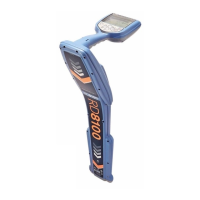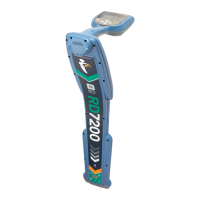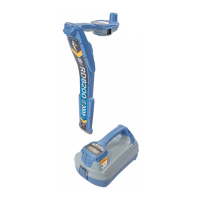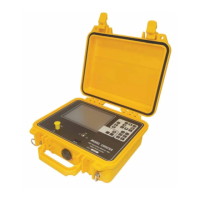RD4000 Locating System User Manual
Page 46
RD4000T3, RD4000T3F, AND RD4000T10 TRANSMITTER OPERATION
This section gives guidelines on selecting the correct frequency, applying the transmitter signal and how to
connect a transmitter. The principles that are common to all transmitters are explained first and specific
information is then given for each transmitter.
Applying the transmitter signal
The transmitter is used to apply an easily identified signal to the target line so that the line can be traced,
identified, and accurately located using the receiver. A number of application techniques are available for use in
different location situations and you must choose the technique that applies the most appropriate signal to the
line without the signal coupling to another line. Field experience, or the trial and error method of working through
the application techniques, will help you determine the best method of applying the transmitter signal for a given
situation.
Selecting the correct frequency
As high frequencies couple best onto other services they are usually used for applying the locate signal in
induction mode. Note they will couple to everything in the vicinity so induction mode is usually best used as an
avoidance technique rather than tracing technique.
Try to keep the power of the applied signal to the minimum required to do the job. Increase the power until a
clear signal is located on the line you wish to trace. Increasing the power beyond this level will couple more
signal to adjacent lines, make it more difficult to identify the target line, and will drain the batteries on the
transmitter unnecessarily.
Do not connect the transmitter to cables carrying live voltages. Always use a signal clamp or plug connector.
Selecting the correct frequency for the job has an element of trial and error attached to it. There can be no hard
and fast rules but a few guidelines are given below:
• Use high frequencies of 33kHz and above for high resistance lines such as: telecom lines, pipes with
insulated flanges, and cast iron pipes. Be aware that the higher the frequency the more tendency there is for
the signal to couple onto other services. Because of capacitance the signal will also be lost over a shorter
distance
• Use medium frequencies such as 8kHz and 33kHz for general locating of pipes and cables. These
frequencies will travel quite long distances and will not couple too much onto other services
• Low frequencies such as 640Hz or 512Hz should be used for long distance tracing. Low frequencies travel
long distances without coupling to other lines. Low frequencies are also useful to locate long distance well-
insulated transmission pipelines.
Transmitter Connection methods
Direct connection
In this method, the transmitter is directly connected to the target line by means of direct connection leads and
crocodile type clips. By using direct connection, the target line can be identified from the application point to the
point of interest. Direct connection is suitable for use on continuous tracer wire, water and gas distribution
systems, telecom pair, power cable sheath (qualified personnel only), or to a pipeline at a cathodic protection
(CP) test point or other access point.
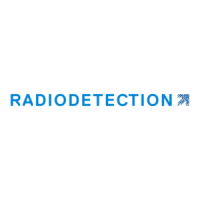
